







<
>
The evolution and business development of the Agricultural Machinery Research Laboratory after relocation can be broadly divided into three stages: The first stage, from 1985 to 1990, was a period of transition. In alignment with the policy of promoting paddy field conversion projects, the research focus shifted to post-harvest processing of agricultural products and regional crop cultivation management machinery. The second stage, from 1990 to 2001, marked a period of growth. In addition to implementing policies for agricultural production automation, there were equipment upgrades, training programs for staff, and a steady return to their positions, leading to significant growth in research activities. The third stage, from 2001 to the present, represents a period of advancement. Responding to social and technological changes, the research in agricultural machinery has evolved into high-tech development through automation and electronic integration technologies. As the Agricultural Machinery Research Laboratory celebrates its 40th anniversary, all staff members remain committed to serving farmers with dedication and continuous improvement, striving for excellence in research outcomes. The following is an overview of the evolution, development, and achievements of agricultural machinery research at our facility over these stages.
The evolution and business development of the Agricultural Machinery Research Laboratory after relocation can be broadly divided into three stages:
Transition Period (1985-1990): In alignment with the paddy field conversion project, the focus was on post-harvest processing of agricultural products and the cultivation management machinery for fruit trees and flowers in the central region. Notable achievements include the development of small-scale buckwheat threshing and sorting machines, mechanization of sorghum seed harvesting, machinery for planting and harvesting coix seeds, deep tillage and fertilization equipment trials, and demonstration of low-cost, multi-functional small-field transport vehicles and simple self-propelled automatic spraying devices for fruit and vegetables.
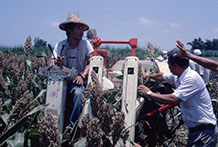
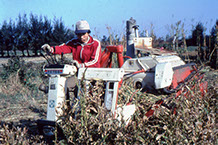
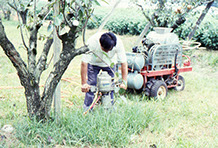
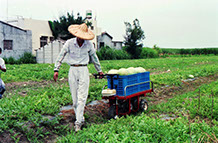
Growth Period (1990-2001): Besides continuing research on post-harvest processing and mechanization, efforts intensified towards the development of greenhouse self-propelled automatic spraying and irrigation systems, organic fertilizer spreading and strip application equipment, bulb flower bulb digging machines, vegetable and flower tray seedling transplanters, passion fruit grafting machines, small crawler-type pesticide sprayers, fruit fly lure and kill board dispensers, GPS-guided self-driving vehicles, spray and scan management systems, and various other automation equipment and technologies.
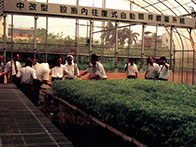
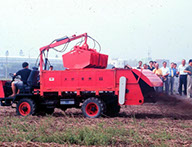

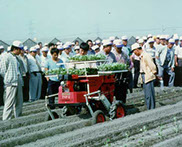
Advancement Period (2001-present): With the trend towards technological and internationalization, and the impact of trade liberalization after joining the WTO, the Agricultural Machinery Research Laboratory adjusted its transformation to enhance industry competitiveness. Accumulating years of automation and computerization technology, the research now aims at high-tech development such as bio-mechatronics. However, it still retains the development of traditional mechanization and automation equipment to assist the sustainable development of Taiwan's agriculture from multiple perspectives and deeper technical insights. The current focus areas include traditional farm machinery, greenhouse technology, mobile agriculture, adversity adaptation, and energy-saving and carbon reduction. Related achievements encompass grain characteristic automatic sorting machines, greenhouse automatic roof-changing hanging rod spraying systems, ride-on orchard mowers and fertilizer drilling machines, electric self-propelled lifting operations, electric three-wheel self-propelled sprayers, greenhouse wireless monitoring systems, and basic hydroponic automatic mixing and irrigation equipment, among others. A total of 39 technology transfers, 39patents, and one publication on agricultural machinery automation and facilities have been completed.
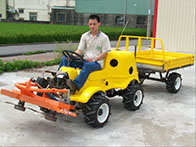
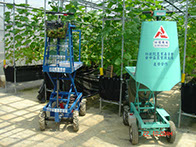
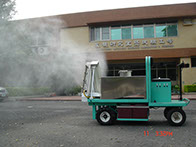
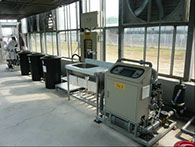
Information and picture sources:Provided by Agricultural Machinery Research Laboratory

Changhua County Ming Lun junior high school, Taiwan.
Ming Lun Junior High School 2024 Cyber Fair
